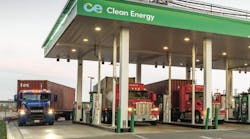Previously I’ve talked about the challenges of measuring fuel economy and determining what a good number is. NACFE even studied how to determine efficiency in a whitepaper published in early 2016. Sure, there are specific tests for measuring MPGs but many of them are done in controlled environments. In the U.S. fleets often measure their MPG using a formula in which the amount of fuel purchased is divided by miles driven.
We’ve been focused on measuring miles per gallon, but as our work expands I am reminded that MPGs is not a universal measurement.
For example, in Canada they use liters and kilometers to determine fuel economy. And to complicate things further while in the U.S. we use distance divided by volume, in Canada and other places they use volume divided by distance (L/100 Km).
This reverse relationship for determining fuel efficiency can make it difficult to hold a conversation in which both sides have a good grasp on what the other side is saying.
Consider these examples:
- 5 MPG equals 47 liters per 100 kilometers
- 6 MPG equals 39 liters per 100 kilometers
- 7 MPG equals 34 liters per 100 kilometers
- 8 MPG equals 29 liters per 100 kilometers
- 9 MPG equals 26 liters per 100 kilometers
- And so on
It’s clear to see in the U.S. the higher the number the better the fuel economy, but in other places the opposite is true — a lower number means you are operating more efficiently.
In the future it may be possible that more of the trucking industry will incorporate weight or the cubic amount of goods into the equation as well to better understand efficiency, much the way the rail industry does now. You guessed right, the tons in “ton-miles per gallon” is a U.S. measurement that no one else uses.
My point here is that when talking about fuel economy it’s important to check your point of reference. As we share best practices across countries and even continents the way we measure fuel efficiency and how we talk about it will become increasingly important. Our goals may be similar but our languages, acronyms and metrics can be very different.


